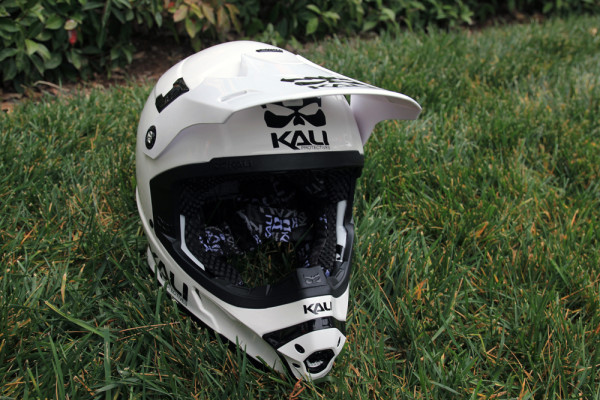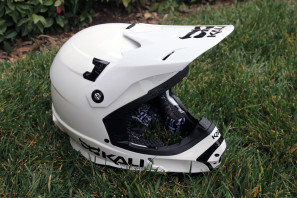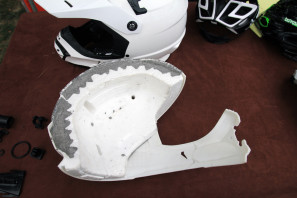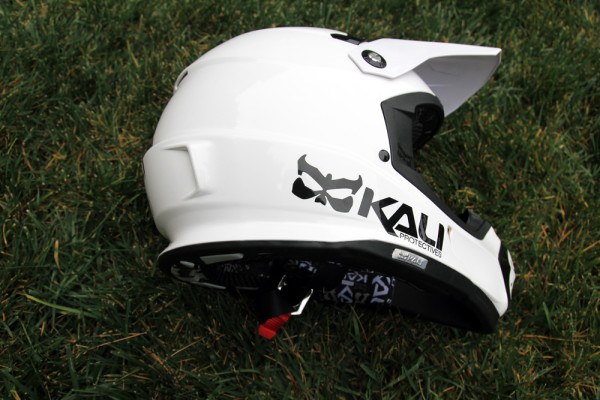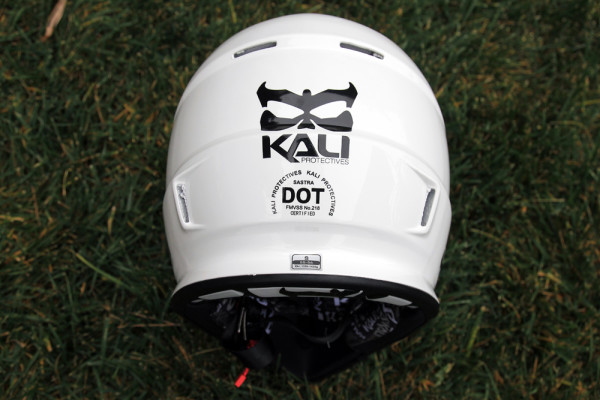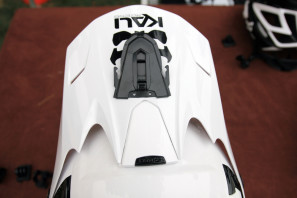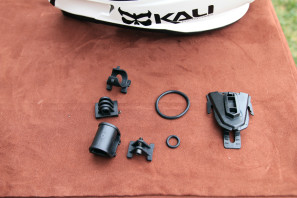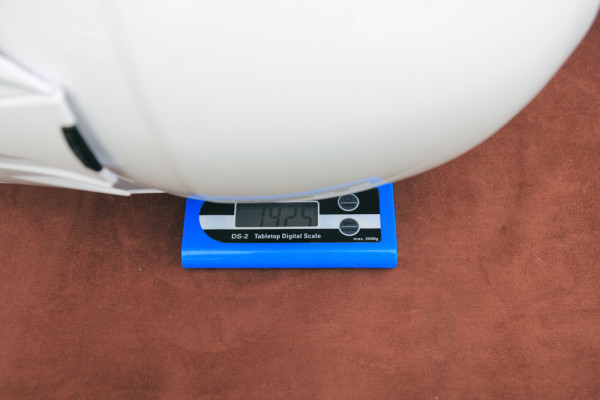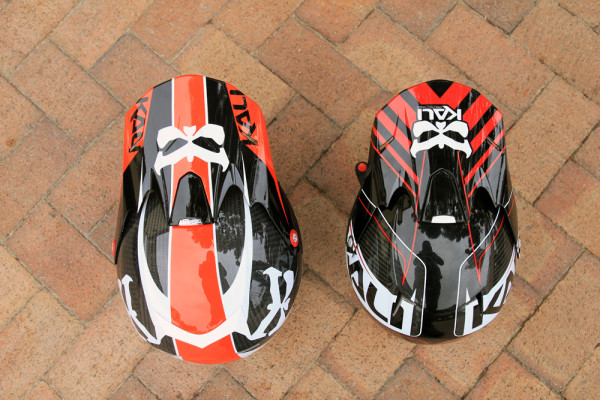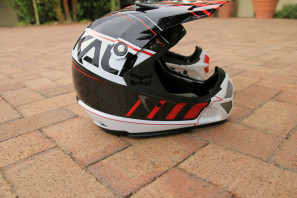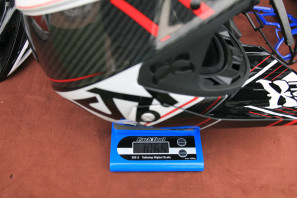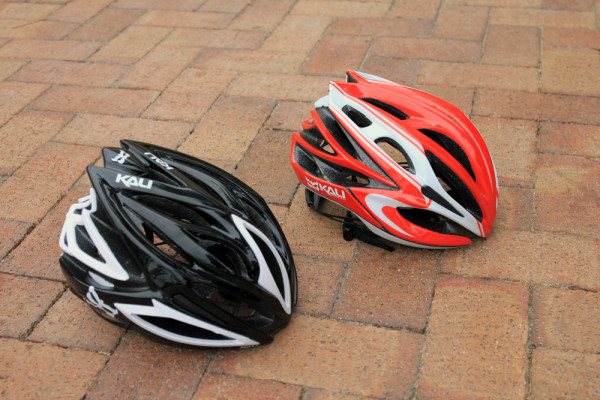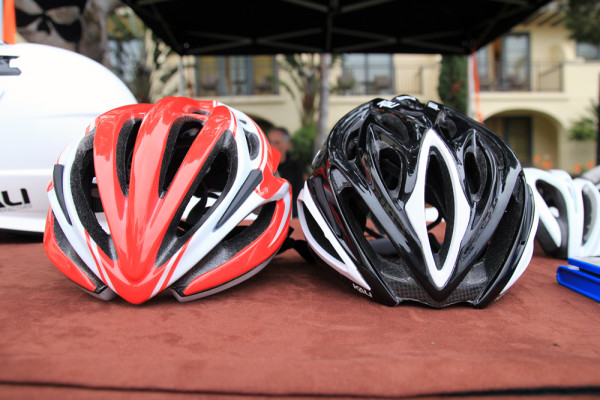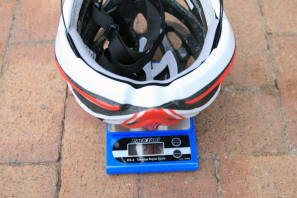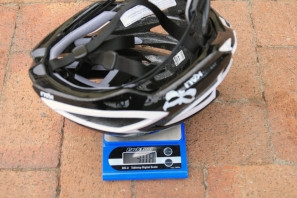If you haven’t figured it out by now, while Kali has a lot of cool looking helmets, the real draw is in their technology. Drawing on his background in military composites engineering and then bicycle composites engineering, co -founder and lead engineer Brad Waldron has introduced a number of new technologies that challenge the ideas of what a helmet can be. No where is that more visible than in the trickle down of Composite Fusion plus into cheaper helmets like the new Sastra full face and Loka road helmets. Add in other features and technology like Bumper fit, Contego, the Pop Out system and more, and you’re left with a new crop of helmets that offer incredible performance at an impressive price.
See what Kali’s been up to with actual weights and more, plus what might be the most impressive DOT bike helmet yet after the jump.
On the downhill side of things, the Sastra is Kali’s newest DOT approved full face. At $149, the Sastra is the first DOT helmet to offer Composite Fusion Plus from Kali under $280. The barrier to entry had been the plastic shell – originally, Composite Fusion Plus had been limited to fiberglass or carbon shells only just because the process didn’t lent itself to the ABS plastic. As Brad puts it, when people tell him something isn’t possible that just makes him want to figure it out even more. Clearly, they found the answer which resulted in an ECE22.05 and DOT (FMVSS218) certified full face well under $200. For anyone not familiar with Composite Fusion Plus, it is a technique that molds the EPS foam directly into the rigid shell of the helmet which serves to eliminate any gaps between the two. The system also uses a multi density approach to the foam with pyramidal coes molded into the cross section that they call their “Cone Head” technology. The cones basically act as a crumple zone and help disperse the energy laterally into the other foam instead of vertically into your head.
Thanks to the lip formed into the bottom edge of the helmet, the Sastra is fully Leat Brace compatible. Even though the helmet is Dot approved, it is equipped with a number of vents to keep you cool when pedaling. Inside you’ll find an antibacterial, removable and washable liner to keep things fresh.
The visor is equipped with Kali’s Pop Out system which allows you to remove the white triangle from the helmet above and replace it with the black insert shown. Once the insert is installed you can use it for mounting a GoPro, light, etc.
Weighing in at 1425g for a small, the Sastra is still impressively light for a DOT helmet at this price range. Not anywhere near as impressive as the Kali Shiva, but we’ll get to that in a second. Sastras will be available in XS-XXL in a number of colors including solids, Patchwork, and Dominoe graphics for $149.
These are both DOT certified helmets. One is a large, the other is a medium – can you tell which is which? It’s hard to believe, but the helmet on the right is a large in the new Shiva, while the left is a medium Prana. We got a sneak peek at the Shiva both at Dealer Camp and Sea Otter, but it’s almost ready for production. Yes, it’s taking a while to make it to production, but this is truly a ground breaking helmet and likely will be the lightest DOT approved helmet in production.
Since we last saw the Shiva, Brad has stiffened up the chin guard and changed out the padding as well as added graphics which gives a weight of 1065g. A good bit more than the 887g we saw last, but it’s still insanely light for a DOT full face. Kali mentioned they were planning to make it a bit lighter and we should see the production version of the Shiva soon.
On the road bike side, Kali is wrapping up the development of their Loka and Phenom helmets which will be available very soon. Each helmet uses Composite Fusion Plus and the Bumper Fit system which uses visco-elastic pads that are co-molded into the EPS liner. If you haven’t tried a helmet with the Bumper Fit system, you should – they are amazingly comfortable as the inside of the helmet conforms to your head. Currently, the Phenom is using Low Density Light foam which is 90g per cubic liter. Brad is actually considering even lighter foam which means it will absorb more energy making a safer helmet. If you haven’t noticed, Brad is always trying to figure out how to make a better helmet.
The big difference between the two helmets is the use of Supervent technology on the Phenom which reinforces the large vents maintaining the helmet’s structural integrity but offering the best ventilation. Both helmets us the Micro Fit system with a dial, and include removable/washable padding, with the Phenom offering a winter/bug liner.
On the scale, the cheaper Loka is actually lighter than the Phenom (275g vs 308g) but the Phenom offers better venting thanks to the Supervent. The Phenom will retail for $159 and will be offered in S/M and M/L while the Loka is $99 in the same sizes.
